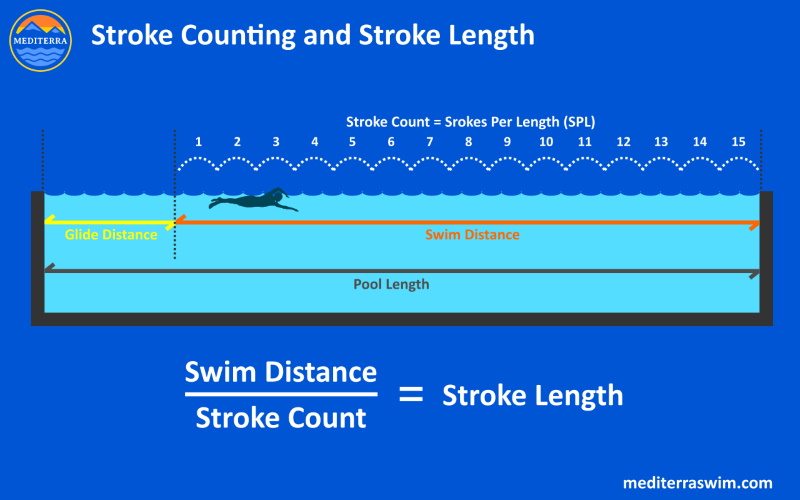How Can We Help?
Lesson for Stroke Counting
The most common way to count strokes is to count each arm entry. When you push off from the wall, you will glide for a moment with the arms extended in streamline in front of your head. As your body approaches the surface you set the catch with one arm and that becomes the “0” stroke count. That arm exits and swings forward to entry, and as it enters, that becomes “1” stroke count, and then you count every entry after that until you touch the wall on the other side of the pool.
Another way to count is to count that first underwater catch (rather than wait for it to go all the way around to the entry), and then count every catch after that. This will result in 1-stroke higher count than the previous method.
It does not matter which way you choose to count as long as you are always counting the same way every time you do stroke counting. If you want to compare your count to someone else’s count make sure the pool length is the same and that they are counting the same way you are.

Your count will be affected by your push off from the wall. You should practice pushing off and gliding the exact same intensity and distance every time (when you intend to count strokes). If you push off and glide the same distance to your first stroke on every length of the pool, then your stroke count can be compared from length to length. But if you push off and glide less or more distance on each length then your stroke count will be affected – if you glide less distance then you have to take more strokes, if you slide more you take fewer strokes.
What Is A ‘Good’ Stroke Count For You?
There is a lot of variability in what would be an appropriate or ‘good’ stroke count for different people in different situations and purposes for swimming.
You can read more on the discussion of stroke counts in these articles:
When Choosing Optimal Stroke Count
Back Story on the Stroke Count Charts
Regardless of what is a ‘good’ stroke count for you, your first objective is to get in control of your stroke count and learn how to shift it up or down and develop the strength to hold consistent your current stroke count for longer durations of swimming. Then you will be in better position to know how far you should aim to improve it and what kind of work will be involved to do that.
